Free Shipping Above $1000
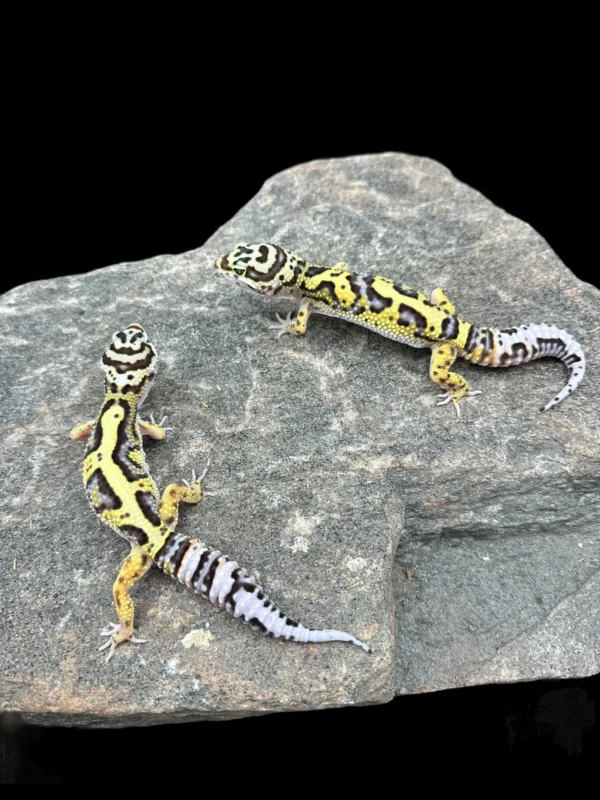
Leopard Gecko (Bold Stripe Jungle)
Price range: $150.00 through $300.00
Buy Leopard Geckos Online USA | Leopard Gecko (Bold Stripe Jungle)
The Leopard Gecko (Eublepharis macularius) is a ground-dwelling lizard native to the arid and semi-arid regions of Afghanistan, Pakistan, northwestern India, and parts of Iran.
Unlike many other geckos, this species possesses movable eyelids and lacks adhesive toe pads, making it better adapted for life on the ground rather than climbing. Its distinctive spotted pattern reminiscent of a leopard gives the species its common name.
First described scientifically in 1854 by British zoologist Edward Blyth, the Leopard Gecko belongs to the family Eublepharidae.
Over time, it has become one of the most popular pet geckos worldwide thanks to its manageable size, calm temperament, and relatively simple husbandry requirements.
In the wild, Leopard Geckos inhabit rocky deserts, scrublands, and dry grasslands, where they shelter in burrows and rock crevices to avoid the intense daytime heat.
They are primarily nocturnal, becoming active at dusk to forage for insects and other small invertebrates. Adults typically grow to 7–10 inches (18–25 cm) in length, with males generally larger than females.
With proper care, these geckos can live over 15–20 years in captivity, though wild individuals tend to have shorter lifespans due to predation and environmental stress.
Leopard Geckos are insectivorous, feeding primarily on crickets, mealworms, and other appropriately sized live insects. In captivity, their diet should be varied and supplemented with calcium and vitamin D3 to prevent metabolic bone disease.
Unlike many reptiles, they store fat in their tails, which serves as an energy reserve during periods of food scarcity or illness.
Housing Leopard Geckos in captivity requires a secure, escape-proof enclosure with adequate floor space and multiple hiding spots to promote natural behaviors and reduce stress.
While a 20-gallon long tank is typically suitable for a single adult gecko, larger enclosures such as a 30- or 40-gallon breeder with dimensions of 36″x18″ are ideal. These provide more room for movement, enrichment, and temperature gradients, improving overall quality of life.
A proper temperature gradient is essential for thermoregulation, with a warm side maintained between 88–92°F (31–33°C) and a cooler side around 75–80°F (24–27°C).
Under-tank heating (UTH) is commonly used to replicate natural ground warmth, and it should always be paired with a thermostat to ensure temperatures remain safe and consistent.
Overhead heating can also be utilized, particularly in enclosures with thicker substrate layers, such as those designed to be naturalistic or bioactive. Ceramic heat emitters or deep heat projectors are excellent choices for this purpose.
These bulbs are more durable than standard glass heat bulbs and emit infrared heat that is less harsh on sensitive eyes an important consideration for albino morphs, which are common in the pet trade and often carry one of the three known albino gene lines.
Ultimately, regardless of the heating method, what matters most is that the heat source provides the proper temperature gradient throughout the enclosure.
Substrate choice should reflect the age and setup of the gecko’s environment. For very young or small geckos, reptile carpet, paper towels, or tile are often recommended for ease of cleaning and safety.
For keepers pursuing a more naturalistic or bioactive setup, loose sand alone is best avoided.
However, a well-balanced mix of soil, sand, and sphagnum moss can make an excellent, realistic substrate that supports burrowing and humidity retention.
The topic of impaction is often surrounded by misinformation. Current understanding suggests that the risk of impaction with natural substrate blends is minimal when environmental conditions are appropriate.
In fact, impaction is more often linked to improper husbandry such as inadequate temperatures, poor hydration, or insufficient supplementation rather than substrate alone.
Even geckos housed on sterile surfaces can become impacted from undigested insect exoskeletons if kept in improper conditions. Providing correct temperatures, access to humidity, UVB lighting, and proper supplementation is key to healthy digestion and minimizing impaction risk, regardless of the substrate used.
Though generally tolerant of gentle handling, Leopard Geckos should be approached calmly and supported fully during interactions to prevent stress or injury.
With consistent care, appropriate housing, and a proper diet, Leopard Geckos make rewarding and engaging pets for both beginner and experienced reptile keepers alike.
Feeding
When it comes to feeding, Leopard Geckos will eagerly consume most types of insect fare being offered. The typical foods include crickets and mealworms of appropriate size, as well as wax worms, which can be fed as an occasional treat. Make sure to check out our incredible Sponsors for all your reptile feeding needs. I will feed no more than the Leopard Gecko can consume within a one-hour time frame. The crickets are dusted with a vitamin and calcium supplement every other feeding.
Maintaining a healthy Leopard Gecko is a matter of simply changing the water daily and sifting out the feces or waste from the enclosure. Once a month the entire enclosure should be dumped, and the décor and enclosure washed with warm water, and the sand replaced.
 Leopard Geckos make an outstanding introductory pet to the wonderful world of herpetoculture. They are easily handled and reasonably priced. I would encourage anyone thinking about owning a reptile as a pet to look into these incredible Geckos as a first pet when it comes to reptiles.
Leopard Geckos make an outstanding introductory pet to the wonderful world of herpetoculture. They are easily handled and reasonably priced. I would encourage anyone thinking about owning a reptile as a pet to look into these incredible Geckos as a first pet when it comes to reptiles.
For a more in-depth look into the wondrous world of the Leopard Gecko care and breeding, I would suggest that you order my book, The Captive Care Prescription for Leopard Geckos. This eBook explains in-depth the many aspects of Leopard Gecko taxonomy, care, breeding, and many other aspects in far more detail than can be covered in one post here.
| Options | Male, Female, Mixed Pair |
|---|
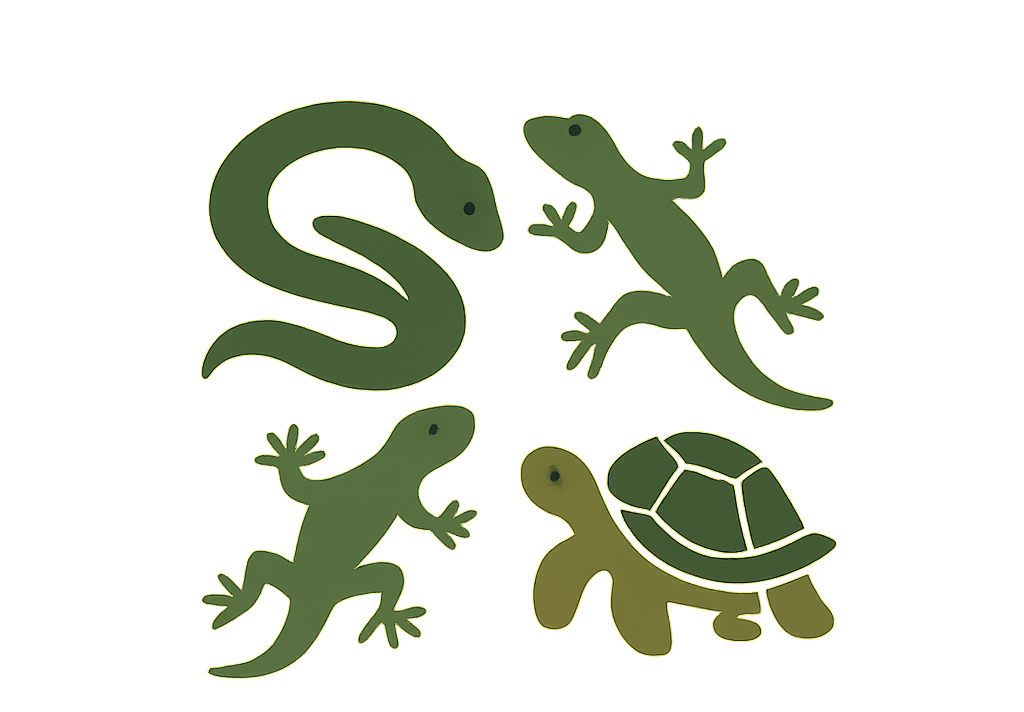
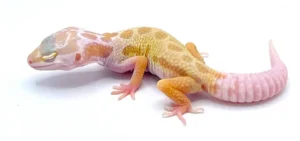
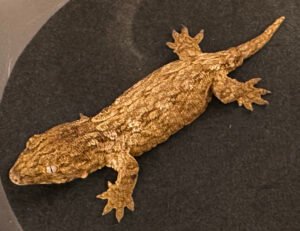
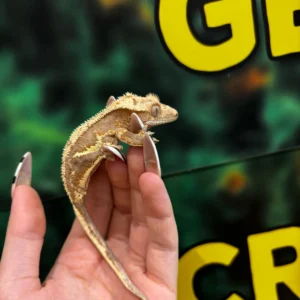
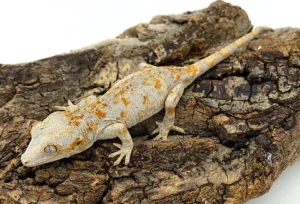
Reviews
There are no reviews yet.